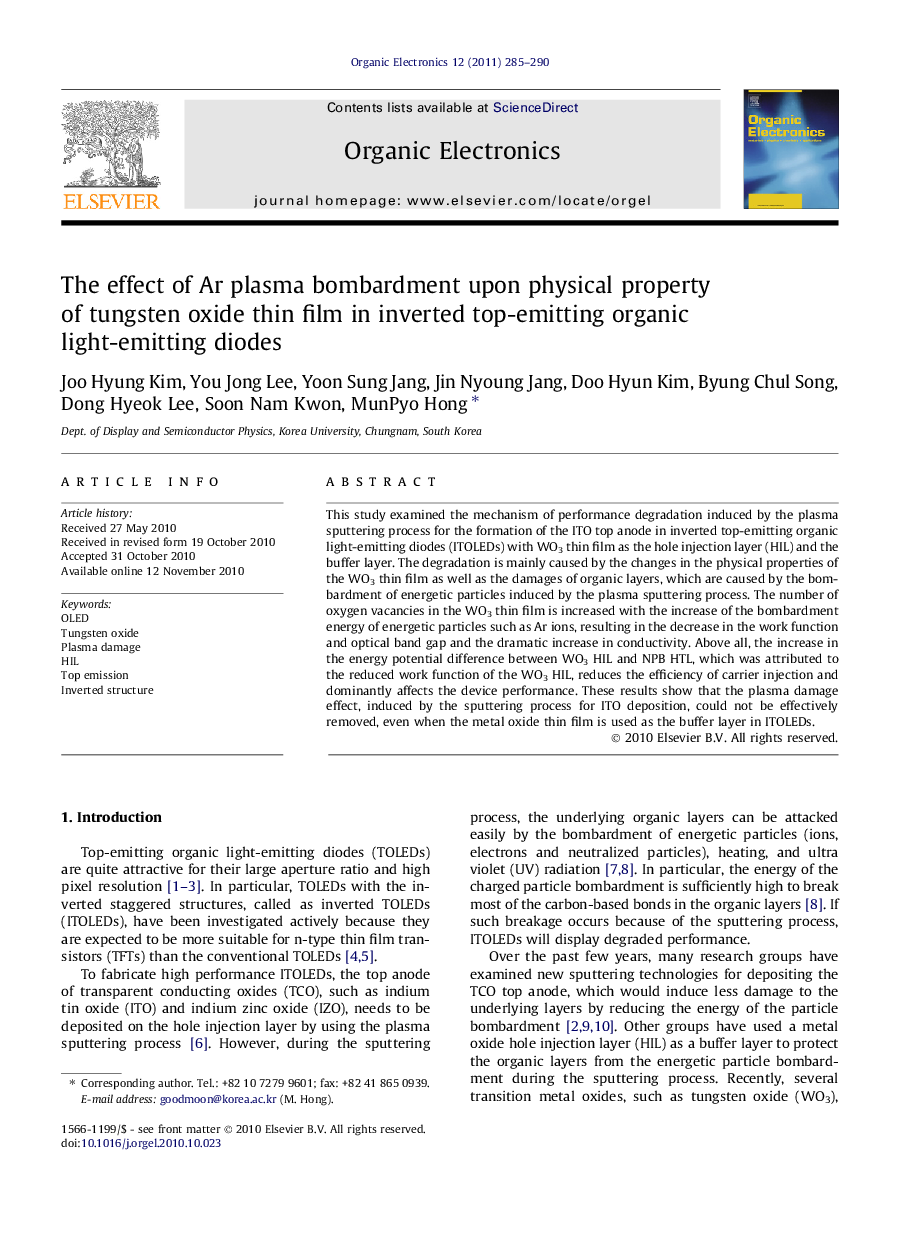| Article ID | Journal | Published Year | Pages | File Type |
|---|---|---|---|---|
| 1264765 | Organic Electronics | 2011 | 6 Pages |
This study examined the mechanism of performance degradation induced by the plasma sputtering process for the formation of the ITO top anode in inverted top-emitting organic light-emitting diodes (ITOLEDs) with WO3 thin film as the hole injection layer (HIL) and the buffer layer. The degradation is mainly caused by the changes in the physical properties of the WO3 thin film as well as the damages of organic layers, which are caused by the bombardment of energetic particles induced by the plasma sputtering process. The number of oxygen vacancies in the WO3 thin film is increased with the increase of the bombardment energy of energetic particles such as Ar ions, resulting in the decrease in the work function and optical band gap and the dramatic increase in conductivity. Above all, the increase in the energy potential difference between WO3 HIL and NPB HTL, which was attributed to the reduced work function of the WO3 HIL, reduces the efficiency of carrier injection and dominantly affects the device performance. These results show that the plasma damage effect, induced by the sputtering process for ITO deposition, could not be effectively removed, even when the metal oxide thin film is used as the buffer layer in ITOLEDs.
Graphical abstractFigure optionsDownload full-size imageDownload as PowerPoint slideResearch highlights► The mechanism of ITOLEDs performance degradation induced by the sputtering process is examined by measurement of devices performance. ► The work function, optical band gap, conductivity, and atomic concentration ratio of WO3 thin film are taken into consideration in our analysis. ► The bombardment energy generated in sputtering process is enough large to affect WO3 buffer layer as well as organic materials. ► The altered physical properties of WO3 HIL have to considered for highly efficient ITOLEDs with sputtered TCO top electrode.
